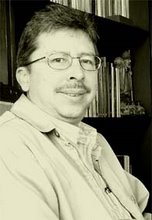Monday, May 21, 2007
By Harold Segura
The Aparecida Conference entered a new stage today. The Presidency submitted the first outline for Commissions’ work. According to the Rules, no participant may send working documents outside the meeting hall—only the press office can do that. I am respectfully abiding with that agreement. So I will limit myself to the most important, which is the analysis of contents.
The outline (a possible table of contents of the final document) consists of four pages and emerged from the Synthesis Document (the outcome of a discussion exercise in which thousands of Catholic men and women from all the Continent took part), Benedict XVI’s inaugural address, the speeches by the Presidents of Bishops’ Conferences and the contributions of the first group work carried out last week. With this document in hand, we went to the working groups.
I went again to group number seven. It is made up by eighteen people, including Jorge Cardinal Liberato Urosa (Venezuela), Bishop Angelico Sándalo (Brazil), Bishop António Celso de Queiroz (Brasil), Bishop Louis Kébreau (Haiti), Fr. Germán Cálix (Honduras) and Sister María de los Dolores Palancia (Vice-President of the Latin American Conference of the Religious, CLAR). The group was chaired by Jorge Enrique Jiménez Carvajal, Archbishop of Cartagena, Colombia. While we as Observers do not have speaking or voting rights, we are allowed to give our input at the Commissions. The Bishops have been very cordial in this.
The discussion focused on the logic of the outline. Those who are familiar with the coming and going of the Church in Latin America and the Caribbean know well the importance of the methodology of SEEING and JUDGING, in order to then ACT. I had already referred to this sequence before, and now I’m coming back to it because, between today and tomorrow, there will be a decision as to whether the Church will keep this dynamic that made it so current since the Second Conference in Medellín (1968) or, on the contrary, it will dilute its social commitments in the midst of doctrinal disquisitions. I intervened three or four times to say what I’m summing up below. I have seen substantial changes in the three structures that I have received up to now. In the Participation Document I came across the “seeing, judging and acting” method (it was at least stated); in the Synthesis Document this sequence had taken on a Trinitarian presentation (seeing with the eyes of the Father, judging with the invitation of the Son, and acting under the influx of the Spirit), but now the sequence is lost between a brief look at reality, an extensive look at the Church and a short projection into the Mission. So it seems, in my opinion, that what is of the most interest to the Church is—the Church itself.
One of the Bishops thanked me for this perspective, and a few others took it as a point of reference for other comments. In the meantime, an elderly Brazilian bishop who was seating next to me said to me, not without malice—“Seeing, judging and acting is Liberation Theology.” And then he added even with more malice, looking at me above the thick lenses of his eyeglasses, “And they don’t want to hear anything about that in this place. Unfortunately.”
Will the Conference give an acute look at reality, leading to renewed commitments? Will there be a return to the past to assert the Eucharistic doctrine and the liturgy of Pius V? Judging by the atmosphere I can breathe in the hallways (they have told me that there are some thirty-five “avant-garde bishops”), the final outline will be more progressive than the one submitted this morning. They will see in order to judge, and they will judge in order to act as disciples and missionaries. …Or have I perhaps become far too optimistic?
PD: You will find attached "those from the Reformation"'s speech.
Harold
martes, 29 de mayo de 2007
 ...OR HAVE I BECOME FAR TOO OPTIMISTIC?
...OR HAVE I BECOME FAR TOO OPTIMISTIC?
Suscribirse a:
Enviar comentarios (Atom)


No hay comentarios:
Publicar un comentario